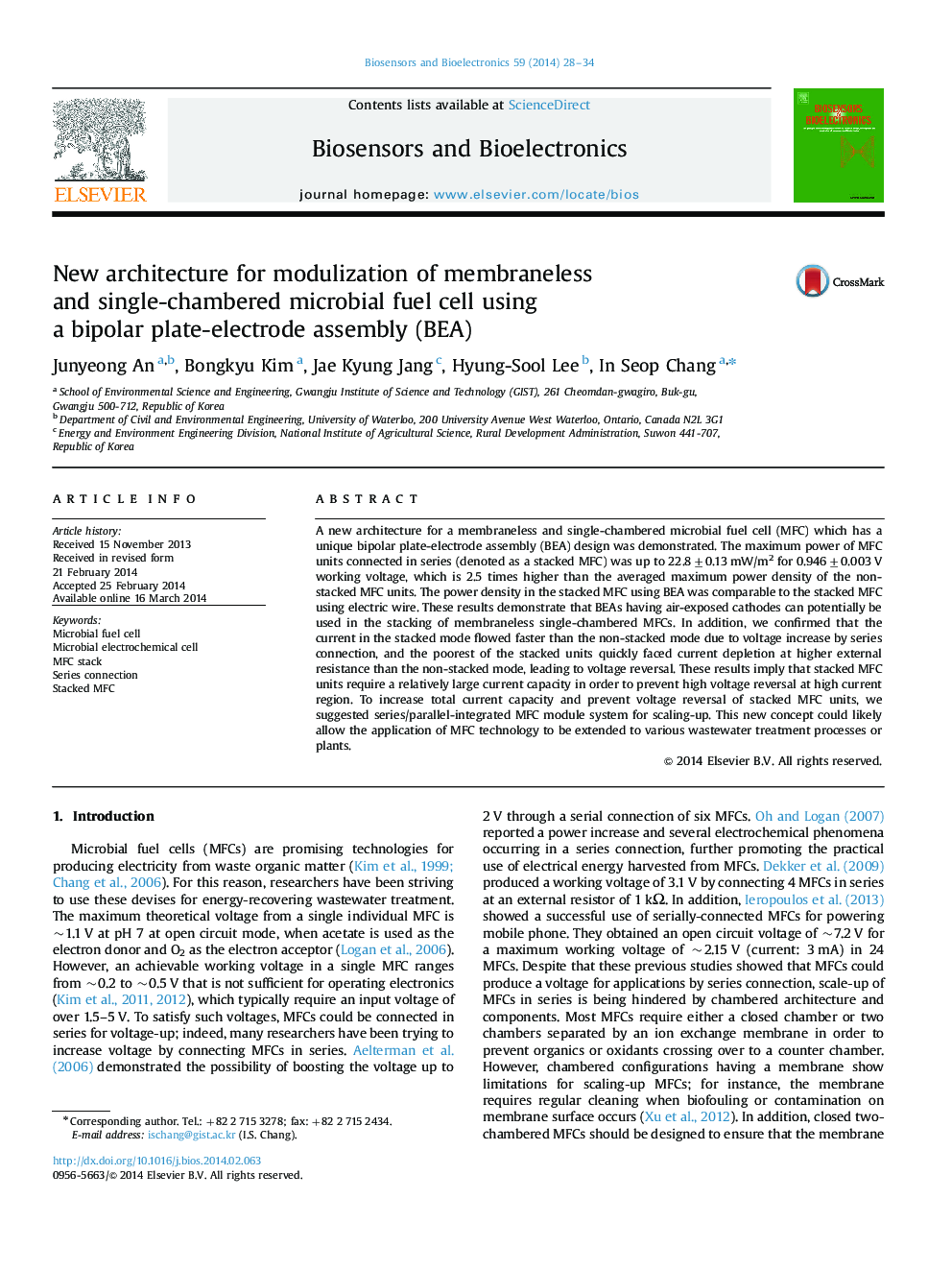| Article ID | Journal | Published Year | Pages | File Type |
|---|---|---|---|---|
| 7233363 | Biosensors and Bioelectronics | 2014 | 7 Pages |
Abstract
A new architecture for a membraneless and single-chambered microbial fuel cell (MFC) which has a unique bipolar plate-electrode assembly (BEA) design was demonstrated. The maximum power of MFC units connected in series (denoted as a stacked MFC) was up to 22.8±0.13 mW/m2 for 0.946±0.003 V working voltage, which is 2.5 times higher than the averaged maximum power density of the non-stacked MFC units. The power density in the stacked MFC using BEA was comparable to the stacked MFC using electric wire. These results demonstrate that BEAs having air-exposed cathodes can potentially be used in the stacking of membraneless single-chambered MFCs. In addition, we confirmed that the current in the stacked mode flowed faster than the non-stacked mode due to voltage increase by series connection, and the poorest of the stacked units quickly faced current depletion at higher external resistance than the non-stacked mode, leading to voltage reversal. These results imply that stacked MFC units require a relatively large current capacity in order to prevent high voltage reversal at high current region. To increase total current capacity and prevent voltage reversal of stacked MFC units, we suggested series/parallel-integrated MFC module system for scaling-up. This new concept could likely allow the application of MFC technology to be extended to various wastewater treatment processes or plants.
Related Topics
Physical Sciences and Engineering
Chemistry
Analytical Chemistry
Authors
Junyeong An, Bongkyu Kim, Jae Kyung Jang, Hyung-Sool Lee, In Seop Chang,
